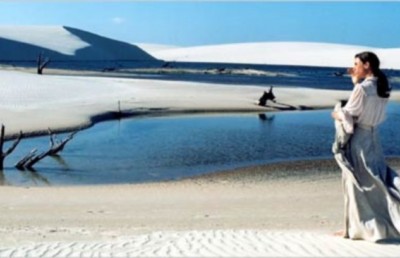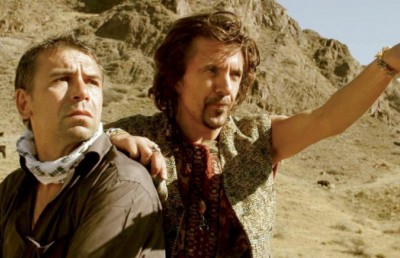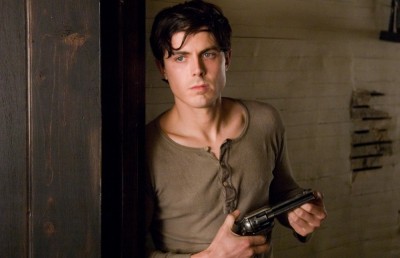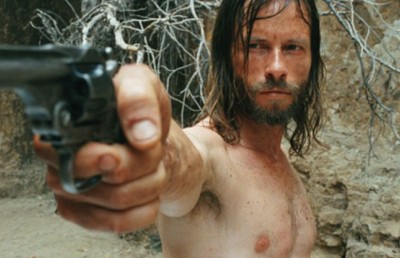Once upon a time…: Introduction to the Theme of Nostalgia in the Films of Sergio Leone
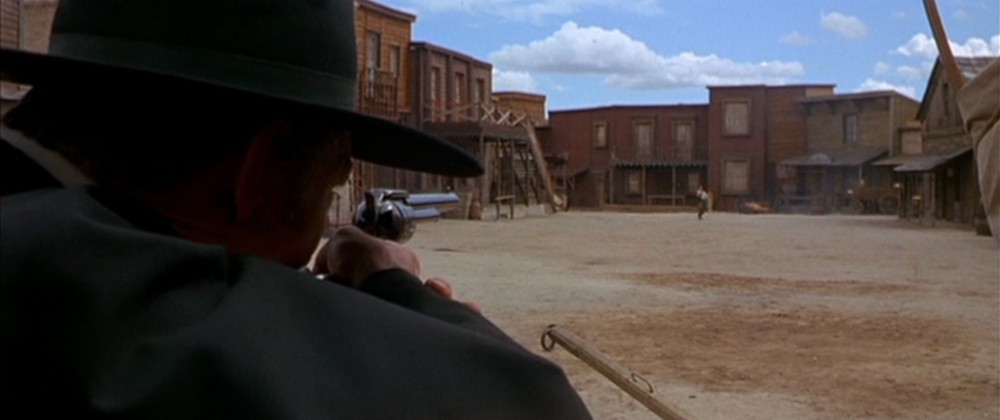
I don’t trust anybody’s nostalgia but my own. Nostalgia is a product of dissatisfaction and rage. It’s a settling of grievances between the present and the past. The more powerful the nostalgia, the closer you come to violence. War is the form nostalgia takes when men are hard-pressed to say something good about their country.
(Don DeLillo, White Noise)
According to the Oxford English Dictionary, nostalgia is a “Sentimental longing for or regretful memory of a period of the past, esp. one in an individual’s own lifetime; (also) sentimental imagining or evocation of a period of the past.”
The Encyclopedia Treccani, in its definition of the Italian word “nostalgia,” refers to a “melancholy state of mind,” and elaborates the idea of “past” by specifying that nostalgic desire is for “distant people” or “something no longer possessed,” and by adding the idea of “aspiration to a state different from the present one, represented as being distant.”
Combining these words and definitions, Bernard Dort notes that the Western is in and of itself a genre which is nostalgic because:
it exists only as a narration of legends: it never ceases to refer to these but at the same time becomes ever more detached from them. Perhaps this is its very fascination: the nostalgia which reawakens in us that lost form, absent from contemporary literature: the early romance/novel/epic [1]
and because it refers to an historical past which is still alive or visible:
in the 5,000 phantom-cities whose dusty skeletons rise all over the country […and which are] all of America’s nostalgia, all the more alive in that it took place often within one short lifetime. This nostalgia for a lost time and for lost purity, which underlie every story, has always been at the heart of the West. [2]
The idea of nostalgia is therefore innate in the concept of the American frontier, of the western, since this concept itself is rooted in the reality of travel, of displacement, of distance. In the beginning, it expresses the emotion which animated the first pioneers, the colonists, the adventurers, the people who had to sacrifice their entire previous lives in the name of the American dream and who, in the process of the invasion of other people’s land, or of completely wild territories, thought back with affection and regret on what they had spontaneously left behind. Then, in an established civilization, the same people who were agents of that process feel nostalgia for the conditions which preceded the current ones (existential, natural, environmental, social); it becomes evident, therefore, that nostalgia expresses the feeling of insuppressible human dissatisfaction.
Distance and suffering, physical and emotional separation, memory and loss: the theme of nostalgia as a representation of pain and of melancholy can be successfully applied to the filmography of Sergio Leone. Nostalgia often assumes shades of measured but painless sadness whose very lack of pain, however, makes nostalgia even more capable of an annihilating internal pain. It is an emotion which not only is not fled from, but quite the reverse, is often voluntarily and/or desperately sought; at the core there is a process of intellectual and visual memory, and the memory itself is frequently painful and invasive.

As the literature shows, memory is a solid fact of human physiology which easily assumes the role of a narrative-artistic mechanism and which can be connected with the destructive state of mind represented by nostalgia. The theme of the past as repressed and in need of rediscovery and therefore as a memory to dwell on, is too connected to the personal sphere of each individual not to become a particular characteristic of art. Life itself, marked by the swift passage of time and the changeability/fragility of experience, is nostalgic; art, created by humans, has had to adapt to this. Nostalgia as a source of melancholy, investigated in particular depth in the major autobiographical literature of the 20th century, finds its most effective representation through film, and the screen becomes the means of refraction of the past which is most able to evoke and bring it to life. Compared to traditional literature, the cinematic vocabulary possesses a greater capacity for synthesis and for specificity of vision, and permits, through some of its peculiar features (the flashback, for example) a more faithful reproduction of these fleeting sensations.
In Leone’s films, despite this, it is not the flashbacks which produce this unusual, although daily, sensation: Leone’s flashbacks pertain rather to the visceral nature of memory, which consists fundamentally of past and distant trauma which suddenly returns and manifests itself. It is this dynamic of immediacy and episodic brevity that is in fact alien to nostalgic processes, which must develop more slowly. Nostalgia is instead something which cannot be constrained to brief formulas or summarized simply; it is a mass of intense and impalpable sensations, both mental and corporeal, which inevitably mark and infiltrate every life to some extent. Not even the gunmen in Leone’s films are immune.
Nostalgia, in Leone’s films is therefore multifaceted and enriched by infinite nuance: we can speak of a primary nostalgia, which is completely personal and conferred by Leone himself and by his own thought processes during the conception of the films. The recreation of an older type of popular film, which in its own right was born of the revisiting and restatement of myths and legends, archetypes and stereotypes, answers an extremely strong inner demand which sees in myths the key to the world, not only in the cinematographic sense. Classical archetypes –for example the hero doomed to solitude and loss, which passed directly into the western genre as well as many others– form part of this Roman filmmaker’s vocabulary, but he also makes use of even the most contemporary and alien experiences (samurai and Japanese rônin) to create a coherent development of his bitter, cynical, and disillusioned view of the world. It is Leone’s gaze itself which is permeated with this nostalgia, which escapes from the limits of the individual and invades the filmic space, which metaphysically spreads itself over the characters, themes, situations, and dialectical and visual choices. The nostalgia and crepuscular melancholy of Col. Douglas Mortimer (Lee Van Cleef) in For a Few Dollars More (1965), or, later, of Harmonica (Charles Bronson) and Cheyenne (Jason Robards) in Once Upon a Time in the West (1968), and, above all, the protagonists of A Fistful of Dynamite (1971) and of Noodles (Robert De Niro) in Once Upon a Time in America (1984) are nothing more than a reflection of Leone’s own nostalgic feelings towards an America which he imagined and discovered as a child, an America perhaps idealized, and definitely desired and naively longed for.

Paradoxically, however, Leone’s nostalgia doesn’t owe itself to distance from or homesickness for real things and places; his is a purely artistic nostalgia. Leone doesn’t miss Colt pistols or bounty hunters – which, obviously, he never saw nor met. He misses instead the things which these signified in their artistic representations, both in general and in film in particular. Leone’s aim is not to reuse the West to restore at last the crude realism which was denied it by the classic Hollywood films, but rather to reinvent an American myth (usually treated, with rare exceptions, by the Americans themselves) in light of a pessimistic and European vision, always keeping in mine, however, the original source, which is viewed with admiration and respect, and wherever possible, rendered homage. The constant in Leone’s films is not subversion, but rather infatuation; in the end, myth remains myth and at most it can be restated and updated, not overturned.
The American western surely influenced him greatly: his admiration for John Ford ventures into idolatry, though his cinematographic approach is completely opposite. It is not a coincidence that Leone’s favorite film by the Irish-American filmmaker was The Man Who Shot Liberty Valence (1962), in other words his most painful, most critical, most claustrophobically static, as well as his most melancholy and secretly nostalgic film.
But Leone’s sources are to be found in a range of places: from the obviously epic westerns – for example Shane (1954), whose simple narrative scheme had a profound impact on Leone, as well as the anthropological and psychoanalytical works of Anthony Mann, Raoul Walsh, or Budd Boetticher –to the hard boiled literature of Chandler or Hammett; from the film noir to the dry and cutting, vibrant and incisive style of the new American literature, mainly Hemingway and Dos Passos. Behind all of this there remains the reference, both symbolic and real at the same time, of the American nation as a factory of dreams, a crazed Disneyland where it is possible to find everything and more: the new myth of the modern era to idealize and celebrate, even more fascinating and mysterious because of its geographical distance, which confers on America the incorporeal, visionary and dreamlike characteristics of a chimera, and allows an a priori nostalgic and utopian speculation.
There is, however, also a second level of nostalgia, within the film, possessed by many, if not all, of the characters. This is the mirror image of Leone’s philosophical position and of his emotional participation in his creations, but it also takes on nuances opposite those of the filmmaker. If on the one hand it can be assumed that Leone misses the harshness of the old days, on the other it is evident that his subjects, confined by their demiurgical author to live in that era, are marked by its inherent suffering and pain. This does not mean that they can be said to aspire to a peaceful and relatively tranquil existence; rather, it may be that only in the midst of violence and fear do they truly manage to understand themselves and find a contradictory completeness. Certainly this shift in tones, this interior tension, produces deep scars, moral questions and even more acute and lacerating existential leaps. It is perhaps in these rare moments that the most agonizing form of nostalgia felt by Leone’s characters is born, in their longing, ‘opiate’ dreams to remain anchored to a titanic past of glory and fortune, and in their simultaneous and contrasting desire, intrinsic in moments of uncertainty and fear, to take a hand in their own fate and to march into the future. This future for some, the evil and the weak, will never appear and for others, the heroes, will mean certainly prosperity and well-being, but also decline, retirement, and therefore a slow self-destruction: moral, physical and above all symbolic. Fatally, this vision of an uncertain future is spread by these same characters –good and bad, victims and executioners that they may be– to the spectators, who will, as with all films, never be able to see the post-film life of the characters; with these westerns this only serves to highlight the destructive and melancholy nature of that life. The choice is extremely logical: Leone’s vision embraces his characters until their eventual decline but is limited to his thematic interest; the heroes lose their connection to their own time and dissolve, theoretically transforming into something other which we are not given to know and which anyway we do not want to know, while historical determinism returns in a weighty fashion.
Their spiritual death is the symbolic equal of the physical death of their antagonist. The event, desolate and cruel, is the most strict kind of hic et nunc, the cinematic present in the most absolute sense of the term. Death, then, acquires a Homeric depth, and takes on a paradoxical and sacred beauty all its own, without negating the goliardic aspects of adverse fate and tragic irony. The torture relived in the flashback in Once Upon a Time in the West reminds us vaguely of the figure of Christ on the cross, but the whole is framed in a light of diabolical and sadistic perversion. Symbolic and representative, the western takes on the colors of autumn and becomes crepuscular.

The Sixties were an epoch of general cinematographic renewal, and Leone knew how to catch the current changes and give a sharp push, initially in the Italian frame and then on an international level, to representations of violence on the screen and to the mythologisation of the hero as well as of the romantic western tradition. This occurs as much on a stylistic level as in the content: Leone invents, varies, perfects, and adapts to the stylistic models of the age (zoom, wide-angle close ups, extreme close ups and detail in CinemaScope –or its variant Techniscope– sudden changes in and out of focus within the same shot), but at the same time, remains conscious of himself and his own methods. He keeps present what the Western has represented up until this point, of how it has degenerated and what it should represent from now on. The air of nostalgia, intellectual maturity, clear-cut pessimism, are all an involuntary reflection of the era which produced them, in a group of works which are decidedly separated from current reality. It would not make sense to draw comparisons or outline classifications, even temporal ones, but without a doubt, the films of Leone, initially provincial, evolved enough to be justly listed in the revival of American western films which occurs between the Sixties and Seventies. This revival has as other protagonists some of the absolute masters of cinema, such as Sam Peckinpah, Robert Altman, old lions like John Huston and Arthur Penn; as well as extremely important but less well-known filmmakers: Monte Hellman, Sydney Pollack, Robert Benton, Abraham Polonsky, George Roy Hill, Don Siegel; and stubborn hacks who knew how to anticipate the times and/or saw the possibility of making it big with middling films lacking real talent (William Wiard’s precious Tom Horn (1980), the philanthropic Elliot Silverstein’s A Man Called Horse 1970), and Ralph Nelson’s much-discussed Soldier Blue, 1970). This linking to American poetics is perhaps one of the greatest compliments that could be given to the work of Leone. Outside of this, it is beyond doubt that his “cinema of memory,” [3] as criticised at the time as it is now exalted, invited numerous directors and film personalities to reflection and critical stylistic revision. It ended up inspiring the new ranks of filmmakers [4] ready to prostrate themselves in front of shots such as the ‘triello’ (‘truel’) of The Good, The Bad and The Ugly (1966), as strongly as it influenced those filmmakers who have always shown themselves to nourish high authorial ambitions or to have an approach and a vision almost completely different than that of Leone. The discourse, if one wanted, could be amplified out of proportion by touching also on the works and style of filmmakers who participated in “a sort of evolution and modern re-elaboration of the American genre par excellence in which it is rooted” in other words the road movie. [5]
It would be all too easy, then, to trace parallels of this type: just like the idealized America which, in its constant work of renovation and affirmation (thanks also to the course of the art), wants to perpetuate nothing but itself, so the popular cinema, ‘bigger than life’ as Leone put it, is, at the core, cinema that wants to be nothing but cinema.
Endnotes
1 Bernard Dort, “La nostalgia dell’epopea”, in Raymond Bellour (Ed.), Il western – Fonti, forme, miti, registi, attori, filmografia, Feltrinelli Editore, Milano, 1973 (Italian edition edited by Gianni Volpi), pp. 60-61
2 Roger Tailleur, “L’Ovest e i suoi echi”, ibid, pp. 31.32
3 As Francesco Mininni defines it, this memory is very particular and shows itself to recall the “mythical memory of humans, that land of blurred boundaries, perennially wrapped in a mist in which the real and the imaginary are fused and confused to the point of being one.” Sergio Leone. L’unità/Il Castoro (Editrice Il Castoro), Firenze-Roma, 1995, p. 17. At the same time, Roberto Lasagna identifies in Leone’s “cinema of memory” a “precise moral intent” which is not just to be found “in a vain and vacuous nostalgia, in a mark for souls who despair of past times and who are convinced that this is impossible to explore outside of the single experience of cinema production.” Roberto Lasagna, Sergio Leone, Le Guide del Cinema, Edizioni Ripostes, Salerno, 1996, p. 5.
4 Jim Jarmusch, Robert Rodriguez, John Woo, Quentin Tarantino are only a few of the filmmakers who, sharing Leone’s idea of cinema as the foremost form of “intelligent” entertainment, have explored in a postmodern and cinematic way the theme of the uncontrolled violence of society and of the constant nearing of death, and who have looked with general nostalgia at the universe of B-movies from days past, often from Italy, as the ideal vessel for ideas and stylistic elements to be revisited and revalorized.
5 Giampiero Frasca, Road Movie – Immaginario, genesi, struttura e forma del cinema americano on the road, Utet Libreria, Torino, 2001, p. 58. In this passage Frasca is in all likelihood quoting André Bazin when he writes, “It is easy to say that because the cinema is movement the western is cinema par excellence” (What is Cinema Vol. 2, p. 141).


